Importance of Flexibility in Martial Arts Stretching
Flexibility in martial arts stretching can be the difference between a successful karate or kung fu head shot and a blown-out knee, the difference between drop sweeping your opponent and a pulled groin muscle. MMA Anthony Pettis could not have executed that incredible flying double or tornado knockout kick on Ben Henderson in 2010 without extreme flexibility, combined with power and strength.
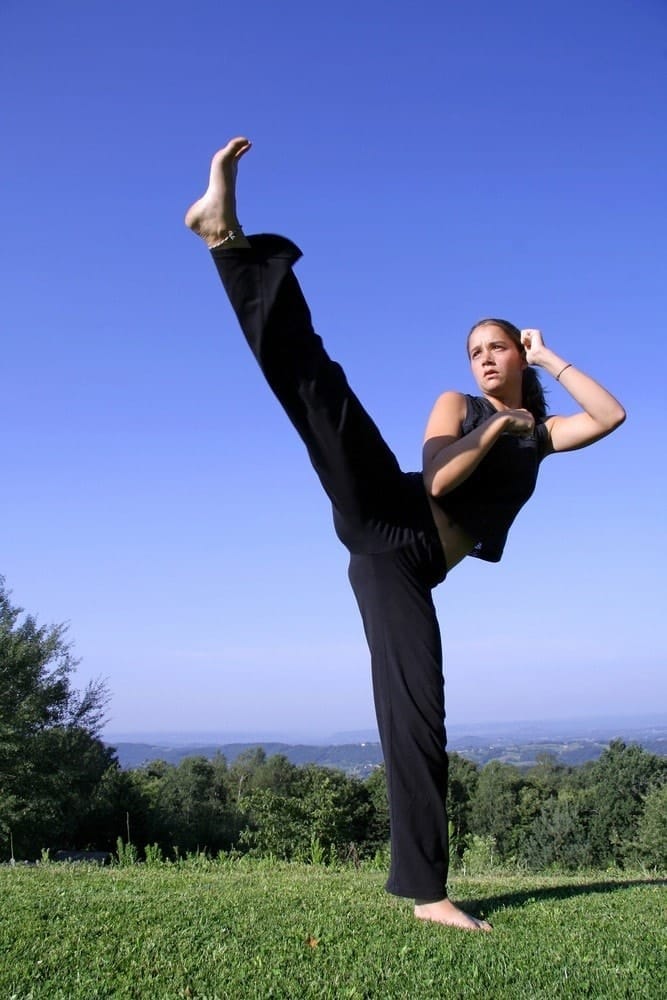

Flexibility is basically the range of movement, or range of motion (ROM) in any given direction, using one particular joint or set of joints. It means how far a person can bend, turn, or move in a certain direction. Improving flexibility means teaching the ligaments, tendons, and muscles how to stretch and lengthen. The length of stretch can be increased with time and practice.
How Does Flexibility Help in MMA Stretching?
Flexibility is at the core of strong, powerful movement in martial arts. It is difficult to achieve powerful torque for takedown without it. Flexibility is that magic place where it’s easy to strike with extreme force, backfist with intense power, throw harder, and grapple more powerfully without risking injury or harm.
Warm Up Before Stretching
Joints should be protected by warming up with 5 to 10 minutes of slow jogging, light walking, or biking at very low intensity before starting to actually stretch. Also stretch wrists, ankles, and neck (carefully) along with shoulders and the rest of the body. Warming up slowly gives time for the joints to pump synovial fluid into the fluid-filled sacs that cushion the bones.
Synovial joints are the most numerous kind of joints in the human body, utilizing this fluid-filled sac and synovial fluid to provide cushioning between bones.
The knees and shoulders are good examples of synovial joints. Also, imagine synovial fluid pumping through the joints as being similar to automotive oil being pumped through a car engine while it’s warming up. It’s a similar idea for essentially the same purpose of warming and protecting the engine--or joints--with viscous fluid.
Stretching Is Essential For Fitness Health
Warm up and stretch, period. One day Bruce Lee did not warm up and stretch out properly. Bruce Lee always warmed up and stretched before beginning one of his favorite “good morning” exercises that consisted of placing a barbell that weighed 100 lbs on his shoulders and bending over until he was parallel with the ground.
The one day he didn’t stretch—is the one day his martial arts days almost ended. That’s the day Lee damaged the fourth sacral nerve in his spine, because he didn’t warm up and stretch before training. Bruce Lee took six months teaching himself to walk again, did his own rehab, and came out of it faster, stronger, and better than ever.
Learn More About Stretching and Flexibility to Enhance Your Training
We Can Help Guide You!
Stretching Can Be Easy To Skip
It can mean that extra 15 minutes in the beginning of class or workout, and extra 10 minutes at the end of training, and at times running out the door or hitting the store seems much more important.
Stop! That few minutes of stretching can mean the difference between giving the ultimate competitive performance and only being excellent, the difference between practicing that new move and pain, or between a great training session and having to treat an injury.
Types of MMA Stretching
Dynamic Stretching Is A Powerful Accelerator
A dynamic warm-up is one of the best things you can do to set yourself up for a good workout
Martin Rooney, Legendary Strength Coach
Rooney has trained Renzo Gracie, Ricardo Almeida, Frankie Edgar, many grapplers and judo players. “First and foremost, it prevents injuries. During a dynamic warm-up you increase heart rate, increase blood flow to the muscles, increase nervous system stimulation, and increase coordination and motivation. These are all things that will set the tone for the workout that is coming.” These are all essential to prepare your body for the intensity of MMA training or stepping into the cage.
It has been irrefutably proven that dynamic stretching actually improves your athletic performance by up to 79 percent across the board. This means that doing the correct type of stretches before an athletic class or event—dynamic movement-oriented stretching—can make or break a class, tournament or competition performance. This makes proper warm-ups a game-changer, whether you’re preparing for a sparring session, a class, or a high-stakes competition. Remember, do not bounce when stretching as it ups the chances of injury or sprain. Always move smoothly.
Dynamic And Static Flexibility
There are different types of stretching techniques utilized to achieve better flexibility but they all fall under one of these two basic categories—dynamic or static.
Dynamic
Static
Both of these types of flexibility stretches are very important, but each type has a specific time of usage for greatest advantage.
Dynamic Stretching Before Training
Many scientific studies have proven that a dynamic warm-up improves performance, but the other great factor here is it’s also been proven to decrease risk of injury. Research has shown that athletes who used dynamic stretching had fewer injuries than those using static stretching before training or competitions.
Achieve Your Highest Performance
Warm-up movements to achieve the highest possible physical performance means start your training with dynamic activity-oriented stretches, such as arm rotations, hacky sack, high knees, leg raises, high kicks, jumping jacks, side bends, bear crawl, lunges, slow jogging in place for cardio, etc. In fact, doing 5 minutes of slow jogging for cardio, and 20 on each side of the body of this list is a good dynamic warm-up.
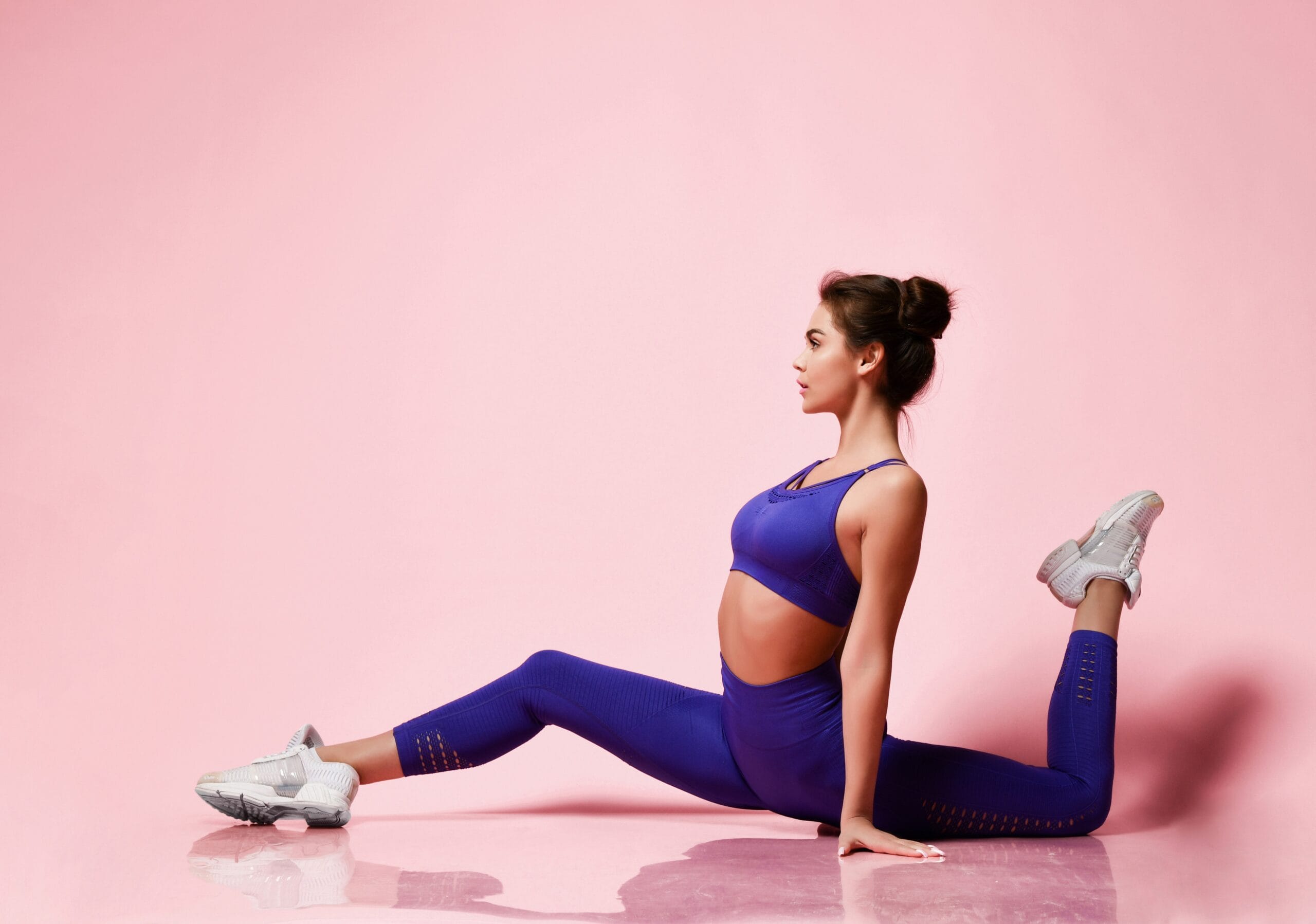
Remember to move slow and gentle, not bouncing or forcing a movement. Dynamic stretches get the body moving and ready for exercise by helping increase blood flow, joint fluids, and muscle temperature. Dynamic stretches use a slow swinging or smooth movement that is never uncontrolled. Think of it this way: Get going with dynamic stretches that move you. Cool down, stretch and relax with static stretches after your training is finished.
Disadvantages: Dynamic Stretches
The disadvantages of dynamic stretching are that if performed too quickly they can cause injury, and they do not improve flexibility as well as static stretches. If dynamic stretching is done too quickly, or the movement is not completed, it can create muscle tears or sprains, so care must be taken not to move through them too quickly or push too hard.
Ballistic Stretching
Ballistic stretching is not recommended for MMA fighters or athletes in general. Ballistic stretching is a type of dynamic stretch that is very aggressive and forceful, easy to be out of control, extremely different from correct dynamic stretching which is slow, and never pushes the joint past its normal range of movement.
Ballistic stretching is an outdated type of mma stretching that uses speed, bouncing, and rapid swinging movements to purposely force a joint or body part past its normal range of movement, which is never safe. For MMA practitioners, such risky techniques can lead to injuries that compromise training and performance. Stick to controlled, dynamic stretching to prepare your body safely and effectively for the demands of the sport.
This type of stretching is not recommended as it comes with high risk of damage or injury to the joints and muscles.
The speed and intensity of ballistic stretching does not give the muscle being stretched enough time to adapt to the stretched position. The speed and intensity of ballistic stretching does not give the muscle being stretched enough time to adapt to the stretched position.
This may trigger the myotatic reflex or stretch reflex that will cause the muscle to tighten up instead of stretch, risking sprain or injury to the joints or muscles.
Resistance Stretching and Loaded Stretching
Resistance stretching typically uses exercise bands, while loaded stretching uses weights, and are two methods many MMA and UFC fighters use to create a stronger core, build strength, and open new ranges of motion. This form of dynamic stretching is unique in the way it both contracts and lengthens a muscle group simultaneously.
Resistance stretching and loaded stretching work a muscle group through its entire range of motion while under contraction and/or using weight to strengthen while stretching.
Static Stretching After Training
Static stretches are excellent as a cool down stretch after training, allowing the body to stay loose and take advantage of that state by relaxing deeper into the stretch, pushing flexibility just a little bit further. The body is placed into position and held there for a period of time while continuing to breath, allowing body weight or gravity to push and pull naturally on the passive body to achieve a deeper, more flexible stretch.

One example of a static stretch is sitting with legs stretched long to the front and leaning forward over the outstretched legs for a period of time, allowing gravity to pull the upper body down and deepen the stretch into the knees, hips, and lower back.
Disadvantages: Static Stretches
Static stretches can potentially cause injury or create irritation of the muscles and tendons, particularly if the body is pushed too far, too fast, and still not warmed up enough yet. Also, as mentioned above, static stretches performed before training or competition lower athletic performance by up to 79 percent across the board.
Static Active Flexibility Stretches
The martial artist who kicks up and holds her foot at head height, statically stretching and strengthening muscles by holding the leg and foot up, and statically practicing head kicks is a good example of a static active flexibility stretch. This form of static active stretch is also used as a physical rehabilitation tool. It is very challenging to do and hold for long periods of time, so it’s typically only held for 10 to 15 seconds.
The static active stretch is termed this because the athlete actively takes a position (active) that is then held (static) for a period of time. In contrast, it would be dynamic flexibility for her to simply kick head high, and repeat 10 or 20 times, stretching out as she slowly kicks through the dynamic stretch.
Passive Or Assisted Stretches
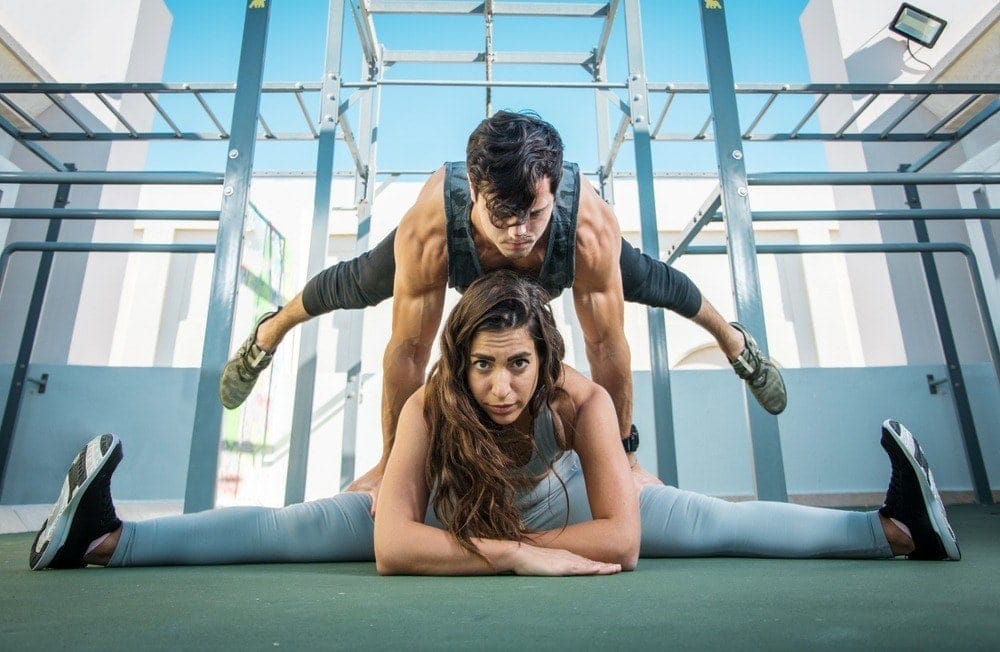
Passive or assisted stretches. Passive or assisted stretches are a type of static stretch. These stretches utilize another person or apparatus to achieve results.
There is a slightly higher risk of injury because of greater force being used by the person assisting with the stretch, and it is very important to go slowly, with a tap out or end word agreement to prevent harm.
A good example of the passive or assisted stretch is the martial arts student on the floor spread-legged with the instructor pushing him lower into the stretch by pressing on his back to get the body down to the floor.
Proprioceptive Neuromuscular Facilitation (PNF) Stretches
These stretches can open up hip joints, etc., with greater ease and safety, while simultaneously strengthening muscles because they are also utilized in the stretching process. Proprioceptive Neuromuscular Facilitation, or PNF stretching, was originally developed as a very effective rehabilitation tool. It is excellent for targeting specific muscle groups and for increasing ROM and flexibility.
PNF stretching is also called Contract-Relax stretching and Hold-Relax stretching. An example of PNF stretching is for the person training to stand against a wall on one leg, and stretch the other leg up high as possible.
A partner holds the stretching leg up while the leg muscle group is tightly contracted for 5--6 seconds. The muscle group is then relaxed while a slow, controlled stretch up is applied for about 30 seconds.
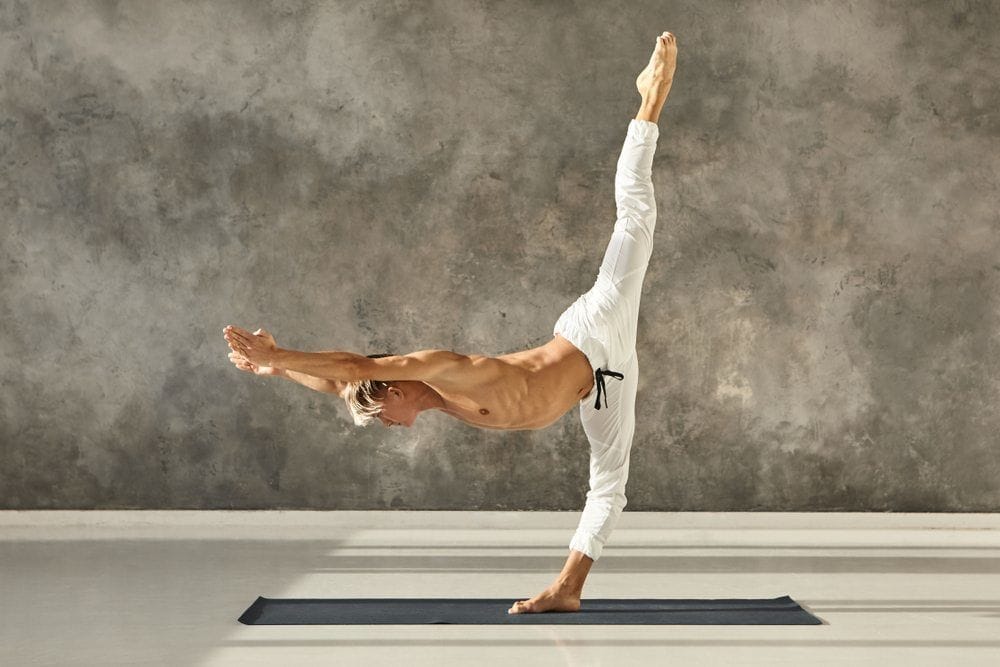
The athlete is allowed to recover for 15—30 seconds, and the process is repeated 2—4 times. The difficulty of process is relevant to the level of the athlete’s conditioning, so the stretch never becomes overly difficult for the person training.
Isometric Stretching
Isometric stretching is also passive stretching similar to PNF stretching, but the contractions are held for a longer period of time. Isometric stretching is not recommended for children or adolescents who are still growing. For MMA practitioners, allow at least 48 hours of rest between sessions and only work one isometric exercise per muscle group in a session. This approach ensures optimal recovery and prevents injury. Always use caution with this stretching method, especially when pushing your limits, to maintain peak performance in training and competition
Increase Flexibility
Martial arts stress the body and tax muscles. Use the static method of stretching when cooling down, and the body is already warm.
Static stretching techniques are extremely effective when simply increasing flexibility is desired, partly because they encourage a slow relaxation of the muscles and body, allowing for a deeper stretch. It works best to hold the stretched position for 30 to 60 seconds.
Bouncing is Anti-Productive
Bouncing while stretching can injure, strain, or sprain your muscles, and create muscle tightness instead of looseness and flexibility. Bouncing is counterproductive to stretching. Always use smooth movements when stretching.
Factors Limiting Flexibility
Internal Limitation Factors
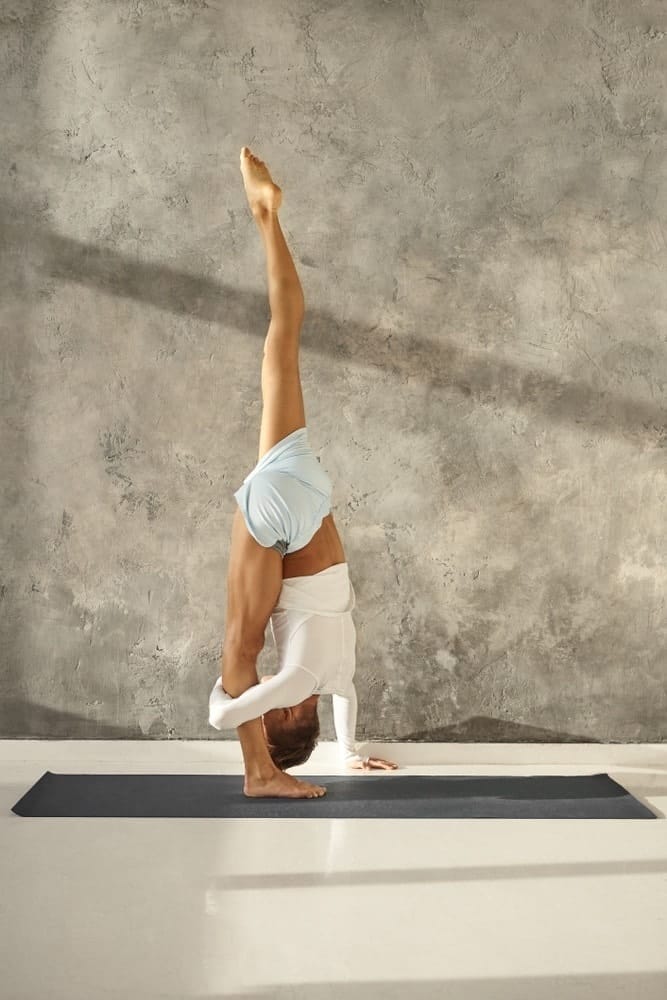
There are a variety of anatomical and physiological factors that may influence the level of flexibility attainable by an individual. Also, not all joints may have the same level of flexibility in a person. The internal limitation factors, or physiological factors of flexibility, are those factors that a person may or may not have any control over.
These internal limitations include factors such as joint structure, connective tissue, genetics, scar tissue, age, and gender. However, regardless of internal limitation factors, flexibility and range of movement (ROM) may always be improved with the correct approach and type of stretches and exercises.
Internal vs. External
Internal limitation factors met external limitation factors in the UFC fight between Anderson Silva and Vitor Belfort in an Ultimate Fighting Championship title match when Silva front kicked Belfort to the head and knocked him to the mat with one kick. Even though Belfort bounced back fairly quickly, the match was stopped to protect his brain from possible permanent injury, which is a rule in UFC. A single front kick seldom has so much impact as to instantly stop a championship fight.
This kick hit Belfort under the chin with such power that it put him straight down. Silva credited movie actor Steven Seagal with helping him perfect the move. This single 3 ½ minute fight sequence shows internal limitations of the brain taking a head shot, and internal limitation of Belfort’s ultimate power moving through one kick, together with the external limitations of UFC rules making Belfort lose the match.
Bone Structure
Bone structure makes a difference if the elbow ‘funny’ bone is very prominent, they have a ‘glass jaw,’ or a martial artist has a floating knee cap, for instance, leaving them more vulnerable to injury. There are internal limitations that can be created by minor differences in bone shape and size. These occur for many reasons, including hereditary, a severe fall when young that changes how a bone or joint develops, nutritional deficiencies, disease, or extreme early training such as martial arts or ballet that will tend to permanently open up hip joints.
Joint Structure
Martial arts practiced correctly, with the proper types of exercises and training, will actually strengthen the joints, or more specifically, the ligaments, tendons, and muscles around the joint, and the bones themselves.
These types of strengthening exercises are discussed in more detail in the Strength Training article. The type of joint involved will impact the amount of flexibility that is possible to achieve. For instance, the spine has very clear movement limitations, since it can become very flexible within the ROM possible for the physical structure, but a single vertebra cannot move independently.
Or compare the relatively non-flexible nature of the elbow joint, which may only flex and extend, compared to the extreme mobility of the shoulder joint, which may be moved in almost any direction.
Connective Tissue
Deep connective tissue such as tendons and fascia will affect an individual’s ability to increase flexibility. Tendons in particular basically do not stretch. They also should not be stretched since they are responsible for ensuring the stability of a joint, for instance the knee, and if stretched may become too loose and unable to hold stability in the joint. Connective tissue will, however, have a certain amount of plasticity and elasticity.
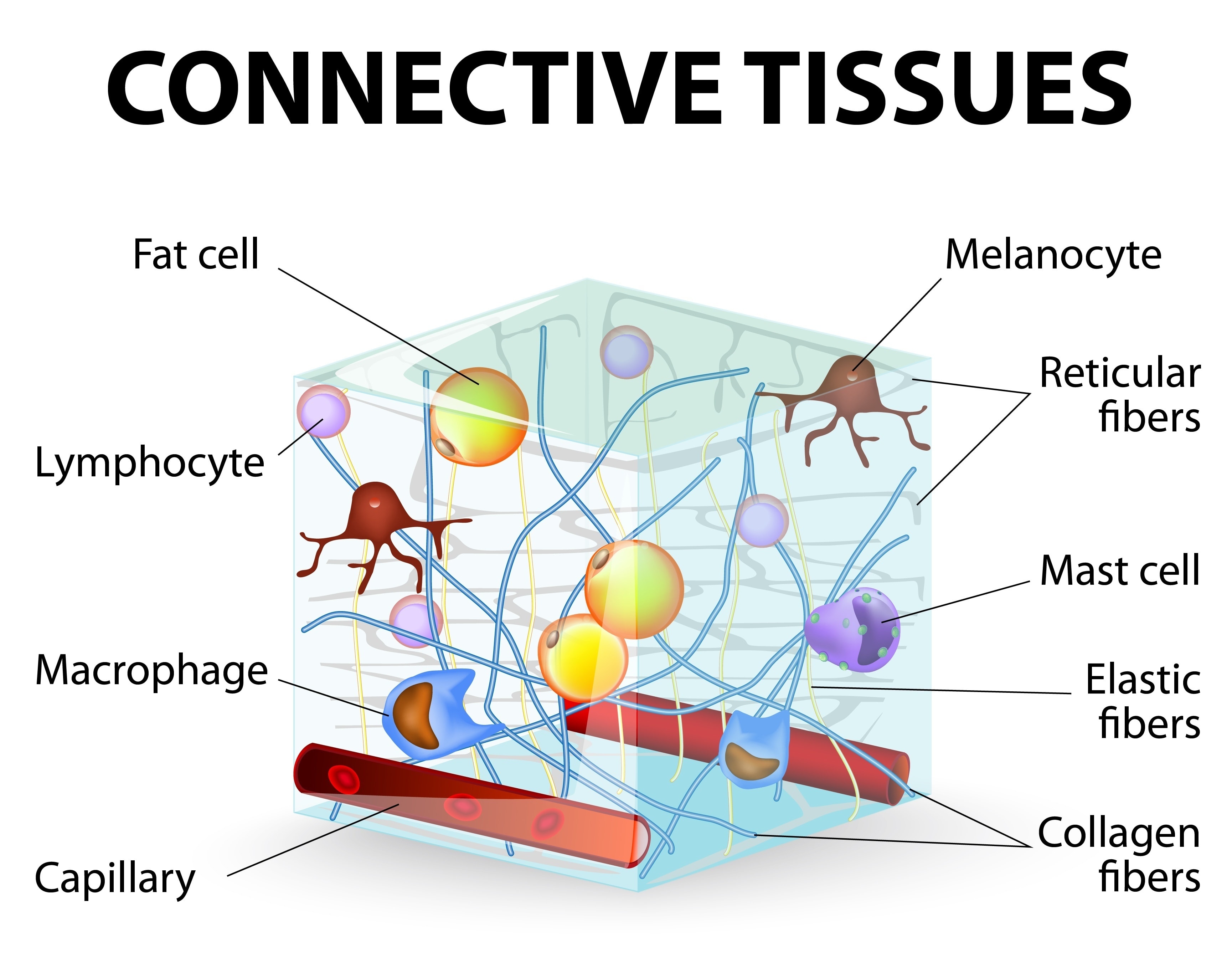
Plasticity means that the connective tissue will be able to hold a lengthened shape once it has been stretched. Elasticity means the ability of connective tissue to return to its original shape and length after being subjected to a passive stretch. Ligaments have a certain amount of plasticity and elasticity, and may respond well to stretching. Care must be taken when stretching ligaments not to over stretch them, since they are also responsible for maintaining joint integrity.
Previous Injury And Scar Tissue
Professional MMA and UFC may seem like they get joint injuries and come right back at it, but they all have on-site medical teams, injury wrappers, physical therapists, get instant injury care, and other advantages the rest of us don’t. Many injuries occur when returning to training after taking a break.
Scar tissue requires time and patience to heal, stretch out and strengthen again, which can be hard when all you want to do is jump back in! When injuries to muscles and connective tissues occur it may cause the body to grow scar tissue in that area, which is a thick, fibrous tissue that is less elastic than regular tissue and takes time to work back into shape. In some cases scar tissue can be severe enough to shorten muscle length and inhibit ROM.
Genetics

Genetic differences mean that some people are naturally more flexible with minimum effort on their part. There is a good side and a bad side to this for martial artists, since it may seem like a student, for example, is stronger or better trained than they actually are, when the truth is they’re only super flexible. If the joint tissue is not strong enough to hold the joint firmly in place, then that amazing high kick or snap kick may injure a knee, hip joint, or pull a groin muscle.
Lifestyle also plays a large part. If a person is naturally flexible but sits all day at a job, then goes home at night and sits on the couch, without any stretching or a minimum training schedule, they may end up less flexible than the person who genetically is not very flexible but who moves a lot during the day and has a regular mma stretching and training routine.
For the busy martial artist finding time to do regular stretching at home between gym training or class sessions can be challenging, but just 15 to 20 minutes a day impacts flexibility immensely, particularly if your ‘day’ job happens to be sitting in an office.
Age
Martial artists, take note: This is an area that requires more research. Typical Western science says that age-related loss of flexibility, strength, and endurance is inevitable. However, people no longer accept that as inevitable and unavoidable, partly because people here and in other countries who walk, run, carry, bend, swim, and generally continue to live in a manner that utilizes their physical bodies every day do not necessarily weaken and wither away. They actually grow stronger.
Western science says: Flexibility eventually tends to decrease with age along with ROM. Part of the aging process involves a shift in body chemistry, and a process called fibrosis means that fibrous connective tissue will gradually take the place of muscle tissue. This fibrous tissue is less flexible than regular tissue. But the above is not a given.
Physical Activity Prevents Loss
Here are a few people whose work ethic allows them to sustain strength, power and flexibility
There are many people who have discovered that the Western medical status quo expectation about age is incorrect. A study of nursing home residents with an average age of about 90 improved their strength between 167 and 180 percent after just 8 weeks of weight training.
So the truth is, yes, if you don’t keep using your body, you will lose it. However, the ability to become more flexible and increase ROM is possible at any age.
Flexibility, strength, and endurance can be increased independent of the age a person begins training.
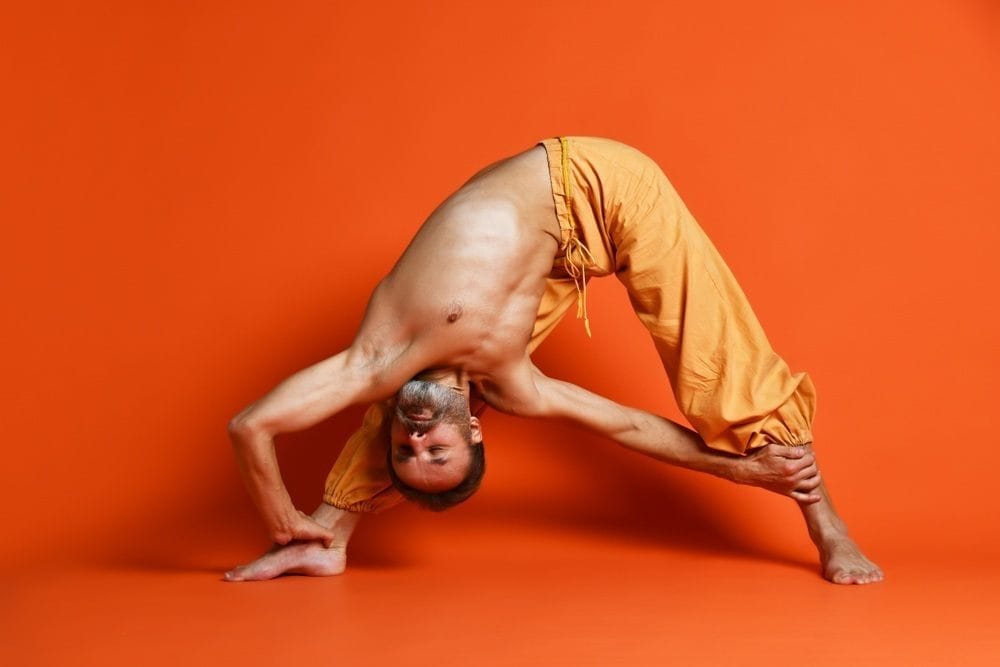
Gender
Male martial artists have known for ages that females are more flexible than males. This is due to several factors, including bone structure, especially in the hips, as women are naturally built to be more open. Women have longer, more elastic muscles, and tend to recover more quickly than men after training.
Also, women’s bodies develop fast and slow twitch muscle fibers almost equally, whereas men’s bodies tend to develop more fast twitch muscle fibers. In general, this allows women more flexibility, and men more strength.
External Limitation Factors
Most external limitation factors are those within a person’s control, such as active or inactive lifestyle, nutrition, hydration, temperature of training area, time of day, overemphasis on flexibility to the detriment of strength, or overemphasis on strength and muscle building to the detriment of ROM and flexibility.
Stretching & Flexibility Are Important for Recovering & Performing at Your Best!
Want to Get More Flexible?
Inactive Lifestyle
The martial artist who is stuck not being able to train knows exactly how destructive that is! If injuries temporarily take the martial artist out of training, swimming is a good alternative that cushions joints and body weight, and depending on the injury, tai chi is another martial art that builds muscle, contributes to joint flexibility, builds chi or innate body life energy. The inactive lifestyle is extremely detrimental to ROM and flexibility, not to mention general longevity.
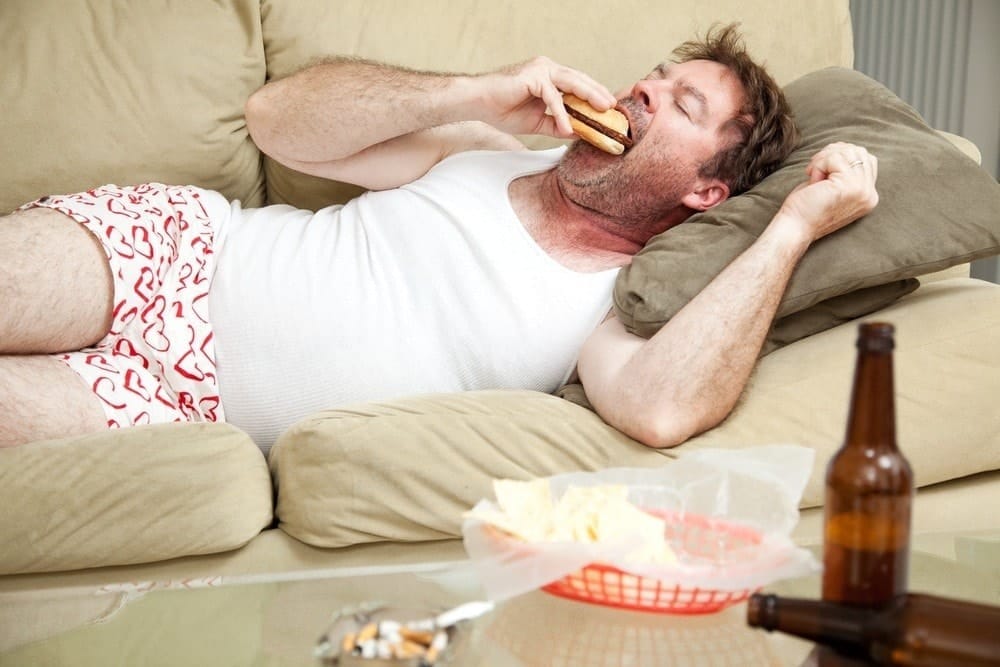
The consensus of many studies has made it very clear that too many hours spent in sedentary pursuits will shorten a person’s life, weaken the body, and give rise to many physiological problems.
Creating the simple habit of doing stretches at least 15 to 20 minutes every day, even if performed while watching television, will aid tremendously in keeping joints flexible, muscles stronger (depending on exercises chosen), and body systems working optimally.
Muscle Bulk and Weight Training
Most martial artists do not have very bulky muscles. However, some of the heavyweight UFC and MMA fighters get close, such as Brock Lesnar or Leo Kostic. The difference is these fighters also train for flexibility. Very bulky muscles and extreme weight training can both interfere with flexibility and ROM.
Large, bulky muscles can get in the way of stretching, particularly when combined with very tight muscles resulting from too much focus on weight training. This can backfire for the person who values large muscles but doesn’t stretch them out afterwards since over time a shortening of the muscle can occur that leaves the practitioner open to injury and sprains.
Additional Considerations
Training Choices
The best approach is to balance bulking muscles and weight training with stretches, and to balance overly flexible muscles with strength training. This helps keep muscle strength and joint flexibility balanced and reduce chances of injury.
Temperature Of Training Area
This is very important, since a warmer training area is more conducive to stretching, while a colder area will tend to tighten up the body. It is best to utilize a mid-range temperature, if possible, or slightly warmer, to facilitate ease in stretching.
Time of Day
The body tends to be less flexible when first waking up in the morning, which is why it feels so good and normal to stretch first thing upon rising. The body has an automatic response towards warming and stretching. Most people are the most flexible in the afternoon, approximately between 2:30 pm and 4 pm.
Clothing or Equipment Restrictions
Dress and prepare appropriately for the place, time, and environment in which you plan to stretch and train. Do not wear heavy winter workout gear when training indoors, for example, as this may result in heat problems or friction rubbing. Conversely, do wear appropriate protective equipment when planning to do martial arts sparring.
Hydration
Staying hydrated creates a martial artist whose reflexes are sharp, with a brain that is sharp and decisive. Drinking enough water is also a very important element of flexibility. Studies have shown that increasing water intake supports increasing overall flexibility, along with the ability to relax the body.
